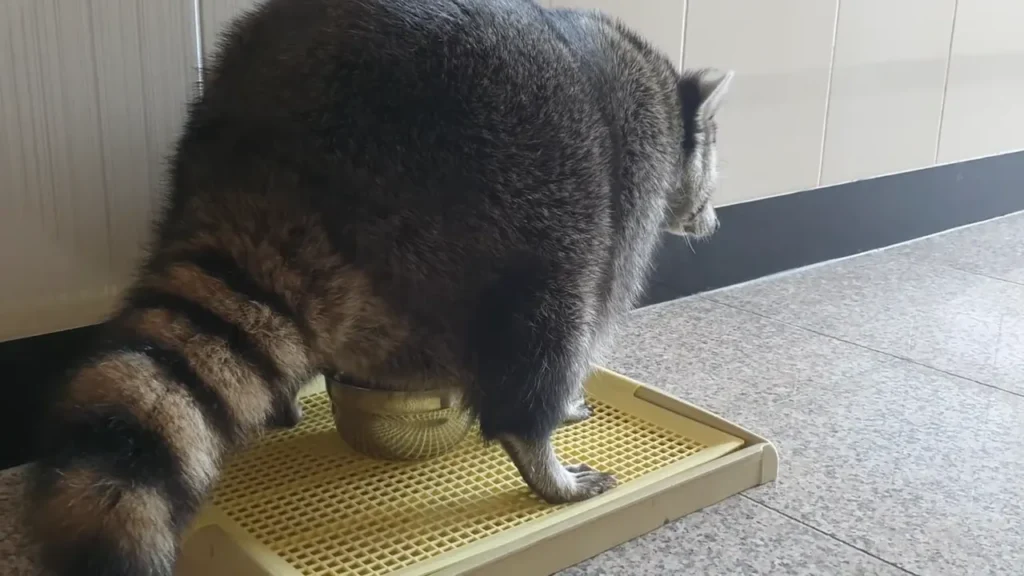In the realm of wildlife-related challenges, dealing with raccoon latrines demands both speed and precision.
In this article, we present the top-notch cleanup procedure that not only ensures swift results but also guarantees a thorough and safe resolution to this common issue.
Learn how to efficiently tackle raccoon latrines while minimizing health risks and environmental impact.
How to Safely Cleanup a Raccoon Latrine

Cleaning up raccoon latrines requires taking proper precautions to minimize exposure to harmful bacteria and parasites. Here are steps to safely clean up raccoon latrines:
- Wear Protective Gear: Equip yourself with disposable rubber gloves, rubber boots that are easy to clean, and an N95-rated respirator to shield against potential exposure to aerosolized eggs.
- Mist the Area: Before you begin, lightly mist the latrine area with water from a spray bottle to prevent the dispersion of dust and debris.
- Remove Feces and Contaminated Material: Use a shovel or an inverted plastic bag to carefully remove feces and any materials tainted with raccoon excrement.
- Disinfect the Area: After eliminating the feces, thoroughly disinfect the area using a solution comprising 1 part bleach and 9 parts water.
- Dispose of Waste: Properly dispose of the waste by either burning it, burying it, or bagging it and placing it in the trash destined for a landfill.
- Wash Your Hands and Clothes: After removing your gloves and boots, wash your hands meticulously with soap and water. Additionally, wash your clothes separately in hot, soapy water.
It’s crucial to understand that eggs in newly deposited feces are not infectious and require at least 2-4 weeks to become infective.
If you encounter a raccoon latrine in or near your home, swift removal and proper disposal of raccoon feces will reduce the risk of exposure and potential infection.
However, if you’re uncertain about how to safely handle the cleanup, it’s advisable to enlist the services of a professional wildlife removal service to tackle the task.
Alternatively, you can refer to our comprehensive guide on ‘How to get rid of Raccoons.’
Proper Disposal of Cleanup Materials from Raccoon Latrine Cleanup
Follow these steps for safe disposal:
- Remove Feces and Contaminated Material: Gently lift the feces and any other contaminated material using a shovel or disposable rigid scoop, and place them into a heavy-duty plastic garbage bag.
- Disinfect the Area: After feces removal, disinfect the area using a solution of 1-part bleach to 9-parts water.
- Dispose of Waste: Choose one of these options for waste disposal: burn it, bury it, or bag it and place it in the trash for landfill disposal.
- Remove Protective Gear: Take off disposable rubber gloves and rubber boots, and thoroughly wash your hands with soap and water.
It’s crucial to be aware that raccoon feces may contain harmful bacteria and parasites. Therefore, it’s essential to exercise proper precautions when cleaning up a raccoon latrine. If you have any doubts about safely handling this task, it is advisable to enlist the services of a professional wildlife removal service to ensure it is done correctly and without risk to your health.
Health Risks Associated with Raccoon Latrines
Raccoon latrines can pose a significant health hazard to humans due to the presence of Baylisascaris procyonis, a roundworm known to be harmful to people. These roundworm eggs are excreted in the feces of infected raccoons and can potentially infect humans if accidentally ingested or inhaled.
Children, particularly young ones, and individuals with developmental disabilities are at the highest risk of infection as they may be more prone to putting contaminated fingers, soil, or objects into their mouths. Infection can lead to severe illnesses, such as blindness, brain damage, or even fatalities.
It’s worth noting that the eggs in newly deposited feces are not immediately infectious and require a minimum of 2-4 weeks to become a potential threat. To minimize the risk of exposure and potential infection, it is crucial to promptly remove and dispose of raccoon feces.
If you are uncertain about how to safely clean up a raccoon latrine, it is strongly recommended to seek the assistance of a professional wildlife removal service. They possess the expertise and equipment necessary to handle the job safely and effectively, ensuring your health and well-being are not compromised.
How Do You Stop Raccoon Latrine
To prevent the formation of raccoon latrines, you can implement the following measures:
- Deter Raccoons from Your Outdoor Space: Minimize raccoon visits to your outdoor living areas by refraining from leaving human or pet food outside. Secure trash cans and eliminate other potential food sources.
- Protect Sandboxes: When not in use, cover sandboxes to prevent raccoons from using them as a latrine.
- Consider Fish Ponds: If you have fish ponds, be aware that raccoons might target them for food and water. Implement protective measures or consider removing the ponds if necessary.
- Eliminate Standing Water: Ensure there are no sources of standing water in your yard. Fix leaky outdoor faucets and remove any puddles or stagnant water that might attract raccoons.
- Remove Bird Feeders: Birdseed can be a raccoon attractant. Temporarily remove bird feeders if raccoons become a problem.
- Clear Yard Debris: Regularly clear brush and debris from your yard, discouraging raccoons from establishing dens on your property.
If you have already identified a raccoon latrine in or near your home, prompt removal and proper disposal of raccoon feces are essential to reduce the risk of exposure and potential infection.
